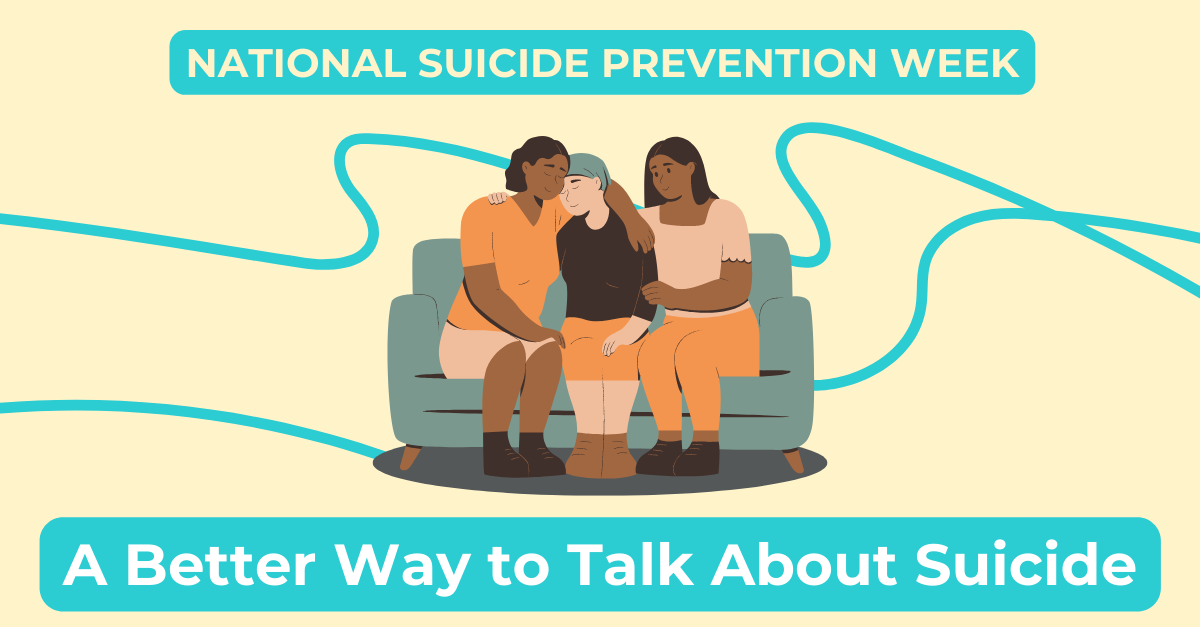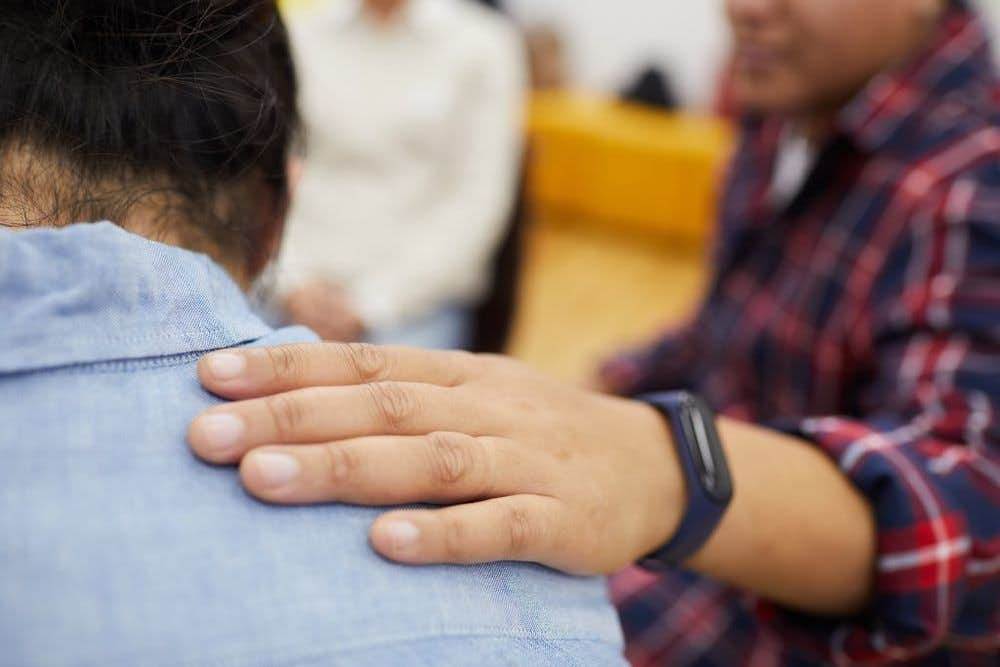September 7th, 2022

In 2020, suicide was among the nine top leading causes of death for Americans ages 10-64. Suicide continues to be the second leading cause of death among early adolescents, ages 10-14, and young adults ages 25-34 (CDC, 2022). Despite the frequency of death by suicide, mental illness, which is frequently, but not always associated with suicide, and suicide itself is highly stigmatized (CDC, 2018, Fuller, 2020).
Broadly speaking, stigma is an attitude of shame attributed to someone or something (Merriam-Webster, n.d.) Stigma frequently results in discrimination and can lead to avoidance of help-seeking, isolation/withdrawal, judgment, secrecy, embarrassment, and shame for those experiencing suicidal thinking or survivors of suicide attempts (Carpiniello & Pinna, 2017; Olson, n.d.). The stigma associated with suicide contributes to and is impacted by a variety of myths about suicide and is apparent in the language with which people use to talk about suicide.
The following article is intended to provide education about suicide including how to talk about suicide and mental health and how to access help and resources for yourself or help others struggling with suicidal thinking.

People attempt suicide for a variety of reasons, but the overwhelming majority of research shows that most people do not attempt suicide because they want to die. Some reasons people do attempt suicide include, but are not limited to:
(Carpiniello & Pinna, 2017; Fuller, 2020)
While many people who attempt or die by suicide are struggling with mental illness, other stressors such as significant losses can also lead someone to die by suicide (Fuller, 2020). The CDC (2018) estimated 54% of those who died by suicide did not have a mental illness at the time of their death and Carpiniello & Pinna (2017) similarly determined a significant portion of those who die by suicide do not meet the criteria for a mental health diagnosis.
There are multiple warning signs associated with suicide including:
(National Institute of Mental Health, 2021; SAVE, 2020).
This widely held belief is false! Acknowledging suicide can reduce stigma and shame and encourage help-seeking. (Dazzi, Gribble, Wessely, and Fear, 2014).
Suicide is a preventable public health problem. People who are encouraged to seek help, receive support, and have access to resources can and do get better (Carpiniello & Pinna, 2017; CDC, 2022). See below for ways to talk about and get help for yourself or someone else who is struggling with suicidal thoughts.

Remember suicide is a public health issue - phrases like "committed suicide" are based on the historical context of when suicide was a crime. Suicide is not a crime, it is a health issue. Consider utilizing phrases such as "died by suicide" or "attempted suicide." (Rogers, 2022; SAVE, 2020).
How to listen to and support someone who is suicidal:
(988 Suicide & Crisis Hotline, n.d.; Beyond Blue, 2022; Rethink Mental Illness, n.d.; Stiehl, 2018)
What not to say/do:
(Beyond Blue, 2022; Centre for Addiction and Mental Health, 2022; Rethink Mental Illness, n.d.)

(CDC, 2022; Mayo Clinic, 2022).
The following list contains multiple resources and crisis lines. If you or someone you know is struggling with suicidal thinking or mental health challenges, reach out. Suicide is preventable and people can and do get better.
The Suicide and Crisis Hotline: 988
Brave Space Alliance: 872-333-5199 (Black-led, Trans-led, LGBTQ+ Center)
Copline International Law Enforcement Lifeline: 800-267-5463 (COPLINE)
Crisis Textline: Text “HOME” to 741741
Hope for the Day Resource Compass: TEXT “ITSOK” TO 741741 (Access to low-cost and free resources for mental health and a variety of social services by zip code)
National Sexual Assault Hotline: 800-656-4673 (HOPE)
National Veterans Crisis Line: 800-273-8255 + 1
National Volunteer Fire Council - Fire and EMS Hotline: 888-731-3473 (FIRE)
Substance Abuse and Mental Health Services National Helpline: 800-662-4357 (HELP)
Trans Lifeline: 877-565-8860
The Trevor Project: 866-488-7386 (LGBTQ+ Youth)
References
988 Suicide & Crisis Lifeline (n.d.) The lifeline and 988.
Beyond Blue, LTD (2022). Having a conversation with someone you’re worried about. Beyond Blue.
Centers for Disease Control (2018, Nov.) Suicide rising across the US. CDC: Vital Signs.
Centers for Disease Control (2022, July 25). Facts about suicide. CDC.
Centre for Addiction and Mental Health. (2022). Words matter. Today Campaign.
Merriam-Webster (n.d.) Stigma. In Merriam-Webster dictionary. Retrieved August 29, 2022.
Olson, R. (n.d.) Suicide and stigma. Centre for Suicide Prevention.
Rethink Mental Illness (n.d.) Suicidal thoughts - how to support someone. Rethink Mental Illness.
Rogers, L. S. (2022). How to talk about suicide. Johns Hopkins Bloomberg School of Public Health.
SAVE (2020). Best practices and recommendations for reporting on suicide. Reporting on Suicide.
Stiehl, C. (2018). How not to talk about suicide. Self.
Written by: Jillian Perry, M.A., LCPC, NCC.
At Clarity Clinic, we have highly trained staff who specialize in therapy and psychiatry services. To learn more about how we can support your mental health, call Clarity Clinic on (312) 815-9660 or schedule an appointment today.
Our Services
Virtual/Online CarePHP and IOPAdult PsychiatryChild & Adolescent PsychiatryAdult TherapyChild & Adolescent TherapyCouples CounselingFamily TherapyGroup TherapyPsychological TestingTranscranial Magnetic Stimulation (TMS)